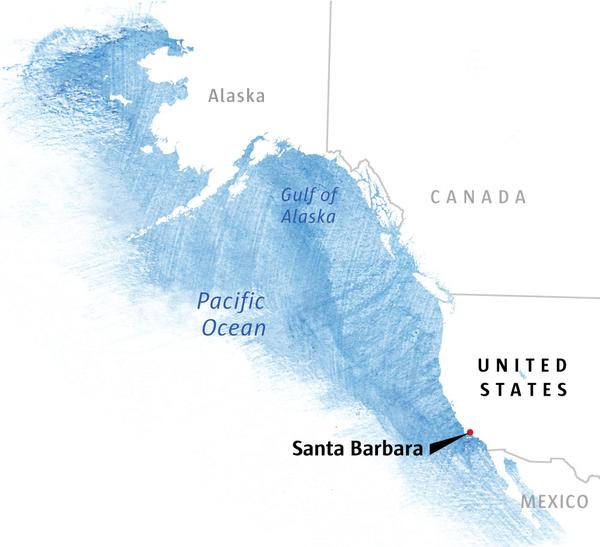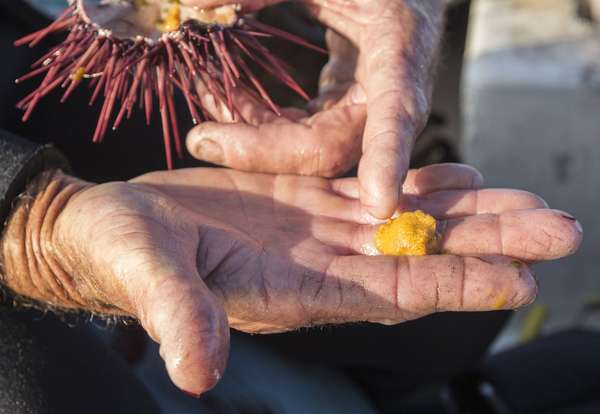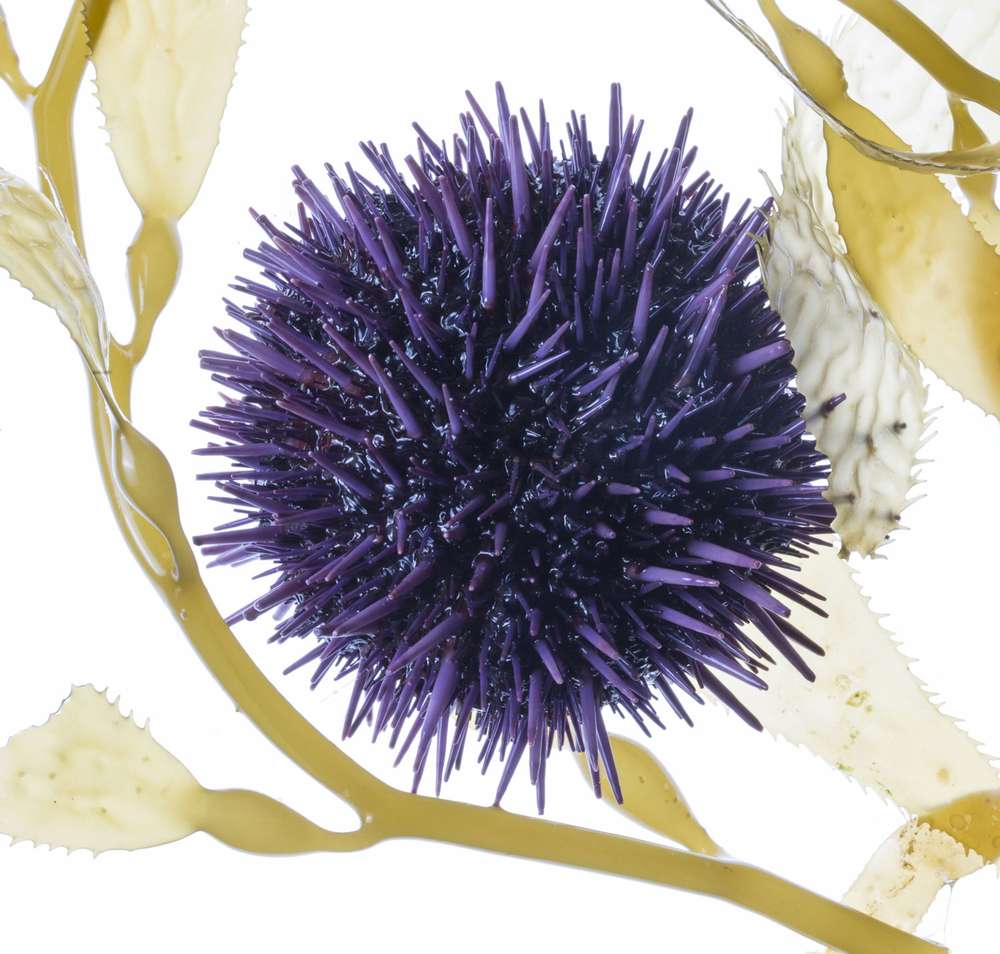Sea Change: Can sea life adapt to souring oceans?

For a glimpse of how nature might — or might not — adapt to ocean acidification, scientists turn to the prickly “hedgehog of the sea.”

SANTA BARBARA, Calif. — The violet bottom-dwelling, prickle-backed spheres wriggling in the tank in Gretchen Hofmann’s lab aren’t really known for their speed.
But these lowly sea urchins adapt so quickly they’re helping answer a question that’s key to understanding ocean acidification:
As fossil-fuel emissions disrupt marine life, will evolution come to the rescue?
Like Darwin’s finches or Great Britain’s peppered moths, these hedgehogs of the sea increasingly embody nature’s stunning capacity for resilience.
A number of plants and animals threatened by souring seas, including some mussels, abalone, rock oysters, plankton and even a few fish, appear likely — at least at first — to adjust or evolve. But few seem as wired as these saltwater pincushions to come through the next several decades unscathed.
Yet work with urchins, as well as other species, suggests that acidification sooner or later may still push these and other marine organisms beyond what they can tolerate.
“Evolution can happen, and it can happen quickly,” said Hofmann, a marine biologist at the University of California, Santa Barbara (UCSB), who has studied urchins for years. “But concerns about extinctions are very real and very valid. Biology can bend, but eventually it will break.”
The oceans are absorbing a quarter of the carbon dioxide emitted by burning coal, oil and natural gas. That, researchers say, is causing sea chemistry to change faster than it has for tens of millions of years.
Which plants and animals can accommodate these more corrosive seas — and for how long — will depend on many factors, from where they live to their population sizes to the depth of stress they face from other forces, such as warming temperatures and pollution. Survival will vary species by species. Not everything will make it.
“This kind of change is not free; evolution is not a gentle sport,” said Stephen Palumbi, an evolutionary ecologist at Stanford University, who also works extensively with urchins. “When evolution happens, it’s because the unfit are dying. It’s pretty brutal.”
And that’s when things work well.


‘Terrifying’ research
In the late 2000s, commercial urchin fisherman Bruce Steele feared things would not go so well. And for good reason.
Urchins graze on algae, drive out kelp and are eaten by sea otters, sunflower stars and humans. Steele, a scuba diver, had made his living since the 1970s scooping the spiny delicacies off the seafloor to sell to sushi restaurants as uni.
But when he read a research paper about acidification, he saw right away what it could mean for his business — and for the ocean he loved.
“When you start knocking out the very bottom of the food chain, it’s incredibly terrifying,” Steele said. “But that’s what the research is showing us.”
Increasing CO2 not only makes oceans more corrosive, it reduces carbonate ions, which everything from scallops to crabs, coral and sea urchins need to build shells or skeletons.
So Steele dialed up Hofmann, his local university expert on spiky echinoderms.
“She thought it was a crank call or something, because … I don’t know,” Steele said. “I guess people figure a sea urchin diver’s not going to be reading a whole bunch of science.”
Hofmann dismissed Steele at first, but quickly called back and started investigating his concerns. She exposed sea urchin larvae to high-CO2 water and made a troubling discovery: Their bodies often got smaller.
“Overall, their body size really matters in how well they swim and how much food they get,” Hofmann said. “So if you’re smaller, it’s really bad news if you’re a baby sea urchin in the water.”
But Hofmann noticed something else, too: Some larvae didn’t change at all.
“When we started raising our babies in the lab, we saw that some of them shrank,” Hofmann said. “But, in fact, some of them didn’t. There were some in there that didn’t respond the same way.”
Hofmann knew enough about genetics to know that distinction might prove important.
Join the conversation
Signs of evolution
In the century after Charles Darwin returned from the Galapagos carrying birds with different-shaped beaks, these finches came to represent the power of natural selection. As the birds expanded to areas with new foods, variations in their genetic code allowed new traits to emerge.
Such selection can be simple, elegant and fast. In Manchester, England, a common tree moth evolved from mostly speckled ivory to black in just decades. Soot from the Industrial Revolution had killed lichen and darkened local trees, which scientists believe allowed birds to more readily pick off the lighter insects. Once pollution was controlled, the tree trunks grew light again, and ivory-colored moths returned to dominance.
Hofmann suspected variations in urchin DNA left some predisposed to handle acidified seas. Nature, quite by accident, had been preparing a long time for this very moment.
It was all about the water. Water chemistry close to shore is rarely static. Ocean CO2 can vary with the time of day or the tides, when plants suck up CO2 to grow, or when animals die and decay.
How ‘upwelling’ works
Winds in the Northwest and Northern California often bring CO2-rich waters to shore, where many species vulnerable to ocean acidification live.

Mark Nowlin / The Seattle Times
The change is more pronounced in Northern California and the Pacific Northwest. When heavy winds blow along shore, deep, cold water that naturally holds more CO2 suddenly wells up from the bottom and gets drawn toward the beach. That means some West Coast urchins have spent millions of years being exposed to high-CO2 waters.
In fact, upwelling is part of the reason Northwest oyster larvae were among the world’s first-known victims of acidification. Because the water already was near the extreme edge of what oyster larvae can tolerate, when man-made acidification spiked it higher, that wiped out billions of shellfish.
So Hofmann and a colleague, UCSB evolutionary biologist Morgan Kelly, mated “wimpy” Southern California sea urchins — those experiencing less CO2 exposure — with hardier males from northern upwelling zones.
The result: northern animals passed on genes more resistant to acidified water.
“The progeny, the babies — the kids — of that father were much better at maintaining the size of their body and not succumbing to the stress of high-CO2 water,” Hofmann said.
At the same time, Palumbi and other Stanford researchers reared urchins in water from Southern California and from high-CO2 zones in Oregon. They found the frequency of some gene sequences shifted in response to growing up under higher CO2.
Urchins, in both cases, were showing they could evolve.
“It was really kind of surprising, and a little bit on the hopeful side,” Hofmann said.
The very upwelling phenomenon that makes the Northwest an acidification hot spot could actually help some species get through it.
But which ones? And for how long?
“The truth is we don’t know,” Palumbi said. “The experiments don’t tell us how long it will take for them to reach their limit. And it doesn’t tell us the price they’ll pay.”
‘Against guardrails’
Animals affected by elevated CO2 don’t always need to adapt. Sometimes new environmental stressors trigger a change in the way they or their offspring use the genes they have.
For example, baby clownfish born to parents reared in high-CO2 water seem to survive just fine, while juvenile clownfish simply placed in high-CO2 water die more often.


Parents produce kids that survive better in the environment they’re going to face, said Australian scientist Gabrielle Miller, at James Cook University, who has studied this phenomenon. “But it’s not a change in genetic makeup. It’s not evolution.”
There are, however, signs that some fish, too, might evolve in response to acidification. Scientist Philip Munday, also at James Cook University, recently exposed wild damselfish to CO2 levels expected in coming decades. That water fouled up behavior for half the animals, leading many to die prematurely.
But, importantly, half the fish didn’t seem to change at all, and they survived as well as normal, healthy fish. Does that mean that some of these Great Barrier Reef fish were genetically predisposed to dealing with higher CO2? It’s too soon to say.
“For some organisms, especially short-lived species, there is considerable opportunity for adaptation,” Munday said.
But evolution does have limits. When scientists breed mice for size, they get bigger over successive generations until reaching a point where they can get no larger. So what happens if the driver of all this change is an environmental cue that just keeps worsening?
Not every species can adapt enough. And not all of those that can will do so at the same speed, even if they live in similarly variable environments, such as areas near shore.
When Kelly, in Santa Barbara, exposed a microscopic species of tide-pool plankton to higher temperatures expected in coming years, she found these copepods lived in such an isolated environment they lacked genetic capacity to adapt much at all.
When Jennifer Sunday, at Simon Fraser University in Vancouver, B.C., studied mussels, she found that they, like urchins, are exposed to wild swings in sea chemistry. But evidence suggested these fast-growing mussels would still take far longer than slow-growing, long-lived urchins to adapt to rising CO2.
And that pace can matter a great deal.
While adaptation is under way, many creatures may die, which can shrink populations — sometimes substantially. The question is, how many individuals can each species afford to lose?
That’s one reason scientists believe that organisms with enormous populations, like urchins, have the best shot.

“Our results are less likely to apply to species that live in less variable environments — for instance, open-ocean fish,” Kelly said. “And our results are less likely to apply to species with small population sizes.”
Three other issues, however, remain concerning for those trying to predict the marine world’s future. For starters, acidification and ocean warming will occur simultaneously.
“What happens if the individuals best able to tolerate high temperatures are the least tolerant to high CO2?” Munday asked. “That could slow adaptation for either of those traits.”
Meanwhile, in 40 or 50 years, CO2 in places like the Northwest will reach extremes even hardy animals like urchins have never experienced in their history. Scientists aren’t certain adaptation will keep up.
“Eventually we’re going to push things up against the guardrails of their tolerances and, pretty soon, they’re going to go right over the cliff,” Hofmann said. “That’s what’s worrisome.”
Lastly, all these changes will take place at once, potentially leading many populations to struggle as their food — and their predators — do the same. It’s tough to predict how that could upend relationships in the sea.
“The bottom line is we can’t count on adaptation to erase the effects of ocean acidification,” said Kelly. “It’s just not a panacea.”
But Palumbi, at Stanford, said it could buy the world time to address the problem.
“Frankly, it seems to me that we need to use that extra time,” he said.
Craig Welch: 206-464-2093 or cwelch@seattletimes.com. On Twitter @craigawelch.
“Sea Change” was produced, in part, with funding from the Pulitzer Center on Crisis Reporting. This article was published November 2, 2013.



Ocean acidification could disrupt marine life on an almost unfathomable scale. What are your thoughts and reactions?
Post a comment →